10-12-18 // URBAN DISCUSSIONS NEVER SLEEP – A CONVERSATION WITH BERND UPMEYER
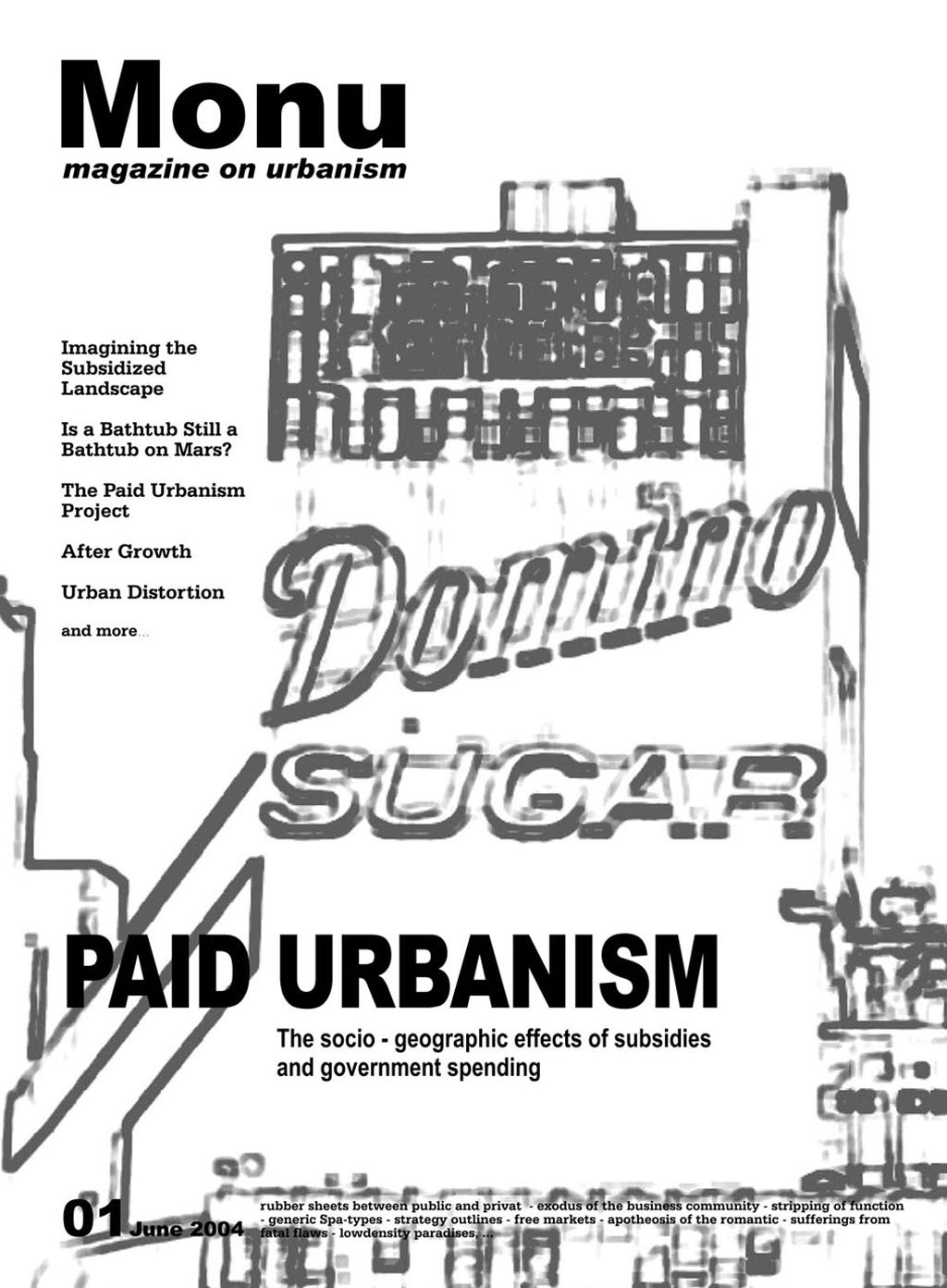
Cover of MONU #1 entitled “Paid Urbanism”
Urban Discussions Never Sleep
Conversation with Bernd Upmeyer
Anthony Morey: What is the history of the publication?
Bernd Upmeyer: The history of MONU magazine can be traced back to the year 2003, one year after I graduated as an architect. The magazine was created as a way to keep in touch with – and to keep working on – urban topics together with some of my former student colleagues from university. It was very much a tool to keep on challenging and stimulating one another intellectually. That is how everything started. MONU’s first issue was published in June 2004, as it took around one year from the first ideas to the printing of issue #1 entitled “Paid Urbanism”, which investigated how cities are shaped by government spending and how a Kafkaesque web of bureaucracies constantly recreates and resuscitates our urban landscapes. “Paid Urbanism” was originally a self-initiated university project, which was based on the idea of paying people to spend time in deserted public spaces.

The “Paid Urbanism Project”
AM: Who runs the publication?
BU: MONU started as a group project and still can be described as such. However, the composition of the group changed over the years. Since I opened my own office in 2005 in Rotterdam, called the ‘Bureau of Architecture, Research, and Design’ (BOARD), most of the magazine is produced there. Thus, various people in BOARD’s team became members of that group by helping producing it. In 2008 Beatriz Ramo, with whom and with her office ‘STAR – strategies + architecture’ I share office space in Rotterdam, also joined MONU as managing and contributing editor, after having supported and collaborated with the magazine since its first issue while we were working together in an architecture office in Amsterdam in 2003. From 2010 onwards we also built an editorial board that consists of experts from the fields of architecture and urbanism, who give input and suggest topics and contributions. This editorial board is growing constantly and has become a valuable tool for the creation of the magazine.
AM: How are the issues constructed?
BU: The work on every new issue starts typically directly after the release of the previous one. Since MONU is released twice a year, with one issue in the middle of April and one in the middle of October, this takes place during the last two weeks of each of these months. By that time the new topic is defined and described in an open “call for submissions” text, which I usually write and which is released on MONU’s website immediately after. However, although the topics are framed and fixed during that time, potential themes are surfacing generally already months earlier and are most of the time inspired by personal experiences, discoveries during the production of previous issues, or through discussions with the editorial board, or with people in my office. After the “call for submissions” is released, people that are interested in contributing to the issue have around two months to submit a proposal. Usually, around twenty pieces are chosen for the final publication.
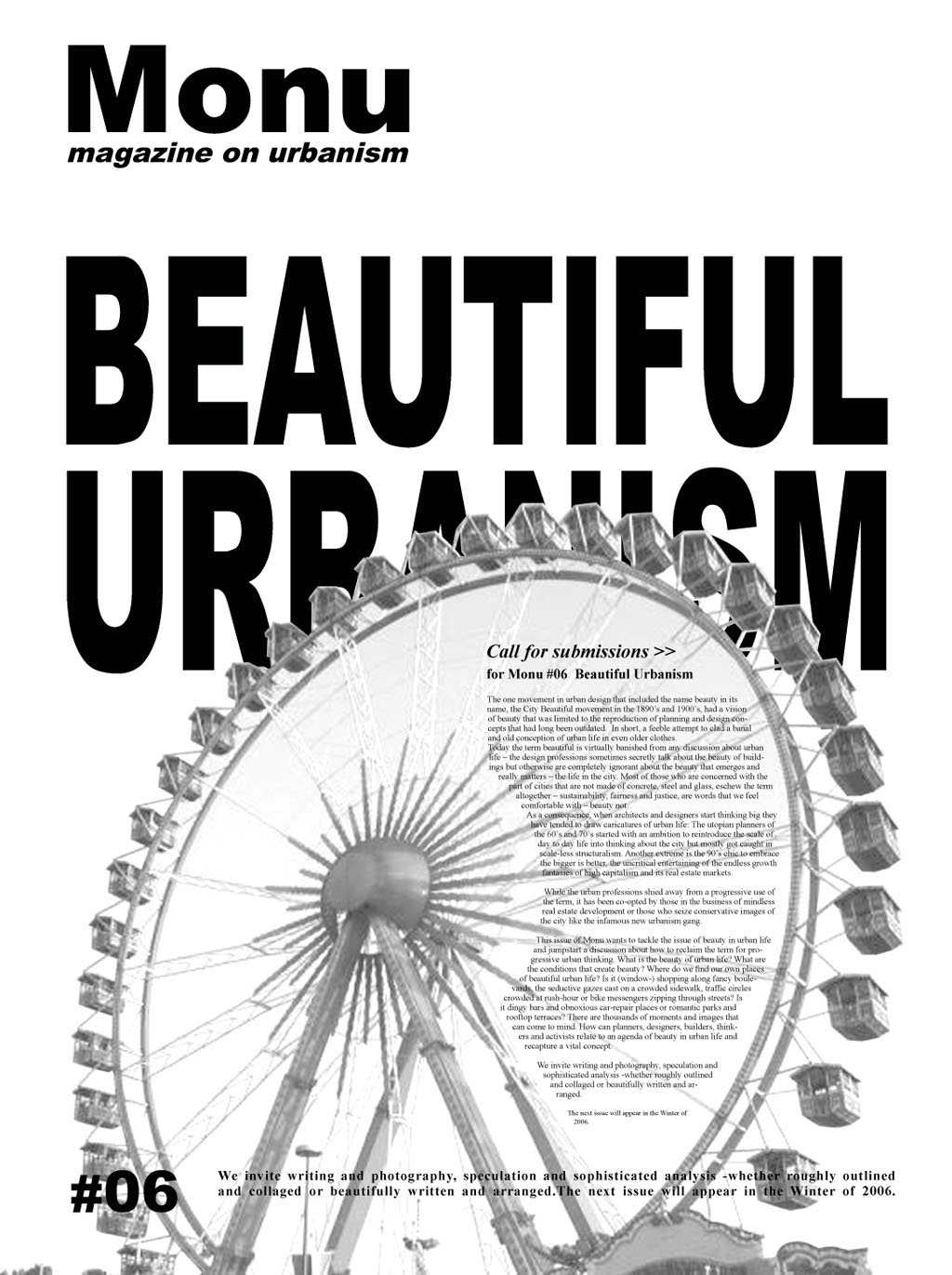
“Call for Submissions”- Poster for MONU #6, September 2006
AM: Is there any other medium to it but the printed object?
BU: Currently MONU is only available in printed form, which we believe is the most suitable medium for it at the moment. But this might change in the future, who knows. During the time when the euphoria about everything that is digital was strongest and almost ecstatic, by the start of the 2010s, we agreed to an offer from a distributor to create a digital edition of MONU. It lasted for almost four years, from 2011 until 2015 as an addition to the printed format. However, after it became more and more clear that a digital revolution when it comes to publications would not take place as expected, the distributor started implementing monthly maintenance fees that we could not afford and which made it impossible for us to continue. Thus, ever since 2015 MONU exists once again only in print, which we consider as a good and reliable technology too, especially since digital media – and the internet in general – have increasingly developed into a place that cannot fully be trusted.
AM: How often is it released?
BU: Ever since the start of the magazine two issues of MONU are released each year, a rhythm which suits us and the magazine well. Although we did not manage to release the two issues always at the same moment of the year at first, we always tried to produce a new magazine more or less every six months. Such a frequency allows us to do other things we are interested in, such as research studies, writing, but also urban, architectural, and design projects, which are not only part of our field of interests, but necessary to survive financially. Although it sounds paradoxical, fulltime dedication to the magazine would most likely lead to its death. For a while we were even discussing lowering the frequency of the magazine to one issue per year or even one issue in two years. This might still happen in the future, but currently we are not planning to depart from two issues per year.
AM: What does it focus on?
BU: “MONU”, the title of the magazine, was created as an acronym: Magazine ON Urbanism. Thus “urbanism” is the clear focus of the magazine, which we understand as an interdisciplinary research field that is dedicated to the exploration and description of cities, including all facets that concern cities, such as social, geographical, historical, environmental, political, economic, cultural, urbanistic, spatial, architectural, etc. aspects. The fact that the magazine can have such a broad scope I consider as one of its most fascinating characteristics and points at its potential. It offers the possibility to investigate topics such as architecture as a part of a wider field, the field of urbanism, which, I believe, makes a lot of sense in the increasingly globalized world that we live in. This can lead to discussions on architecture that are more relevant to society considering its impact on cities and the way we live.
AM: How are the editors organized?
BU: The discussions among – and work with – the editorial board and the managing and contributing editors about the topic, the content and the selection of contributions, take place mostly through emails or occasional meetings during the months before the release of each issue, so everything is organized very much externally and in a decentralized way. However, the final production of the magazine, including the layout, improvements of texts if necessary, the work with images, and the preparation of the final print documents, happens entirely in my office BOARD in Rotterdam, where some members of BOARD’s team become temporarily design and editorial assistants of the magazine. For the survival of the magazine, we have to be very well-organized and work as efficiently as possible. That means that we cannot do the typical back-and-forth with the authors over several weeks, which I think is not a bad thing, because it can easily limit the individual contributor’s speech.
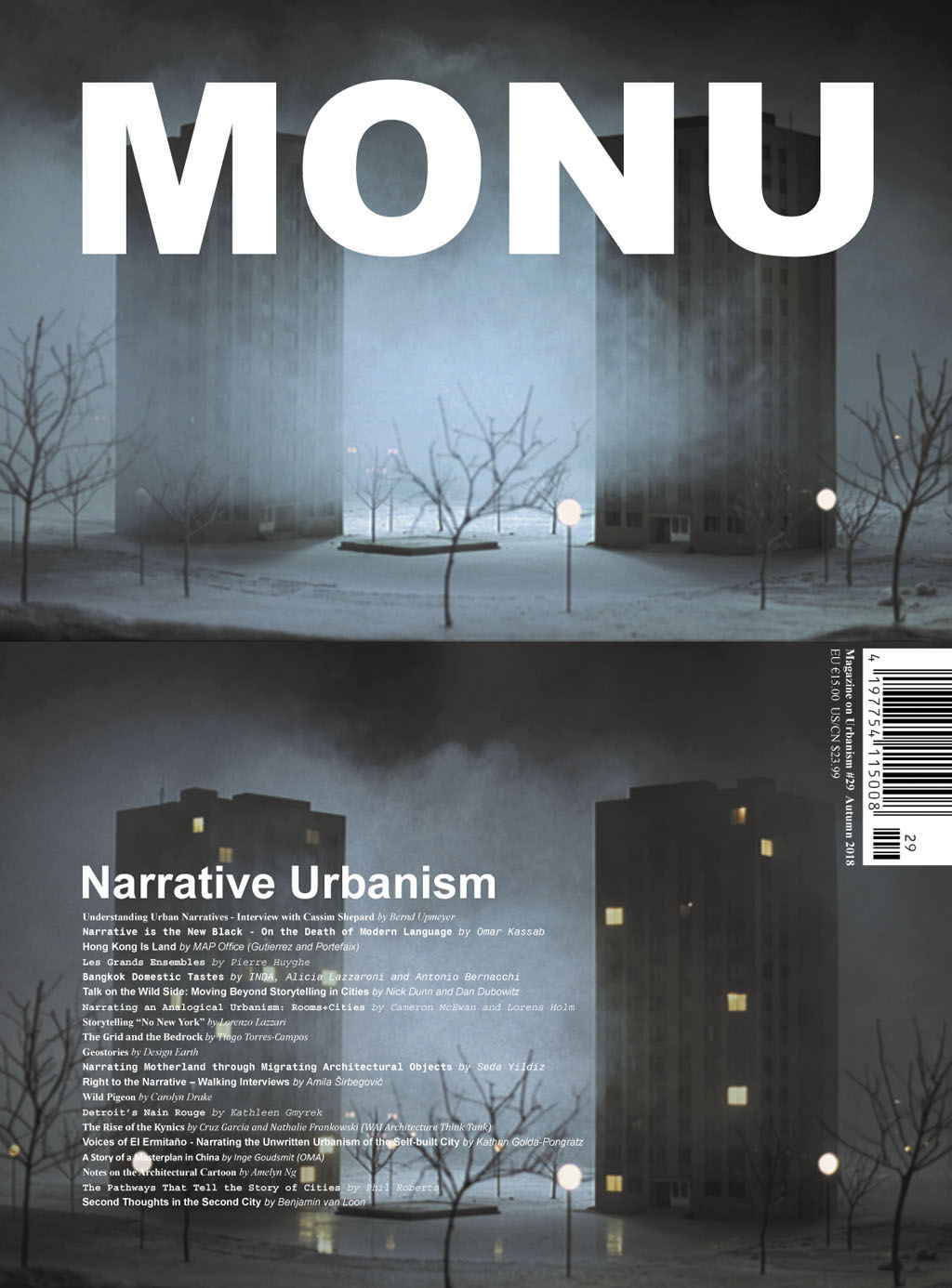
MONU’s most recent issue on “Narrative Urbanism”
AM: What is the long-term goal of the publication?
BU: Our long-term goal for MONU is very similar to the goal we set in the early years of the magazine, which is to scrutinize, criticize, and question prevailing urban conditions in order to understand better how cities work, to fuel the debates around them, and ultimately to improve our living conditions within them. And as long as people are still motivated to contribute and we are not getting tired of initiating new topics and investing time and energy into something that will probably never have a secure and stable financial base, we will continue this very unique project. For us, it also important that MONU remains functioning as a platform for the exchange of ideas and for providing a voice for many people in the field and especially for emerging professionals who get a chance to be published and have their ideas presented in print format, which will secure a certain freshness to the magazine.
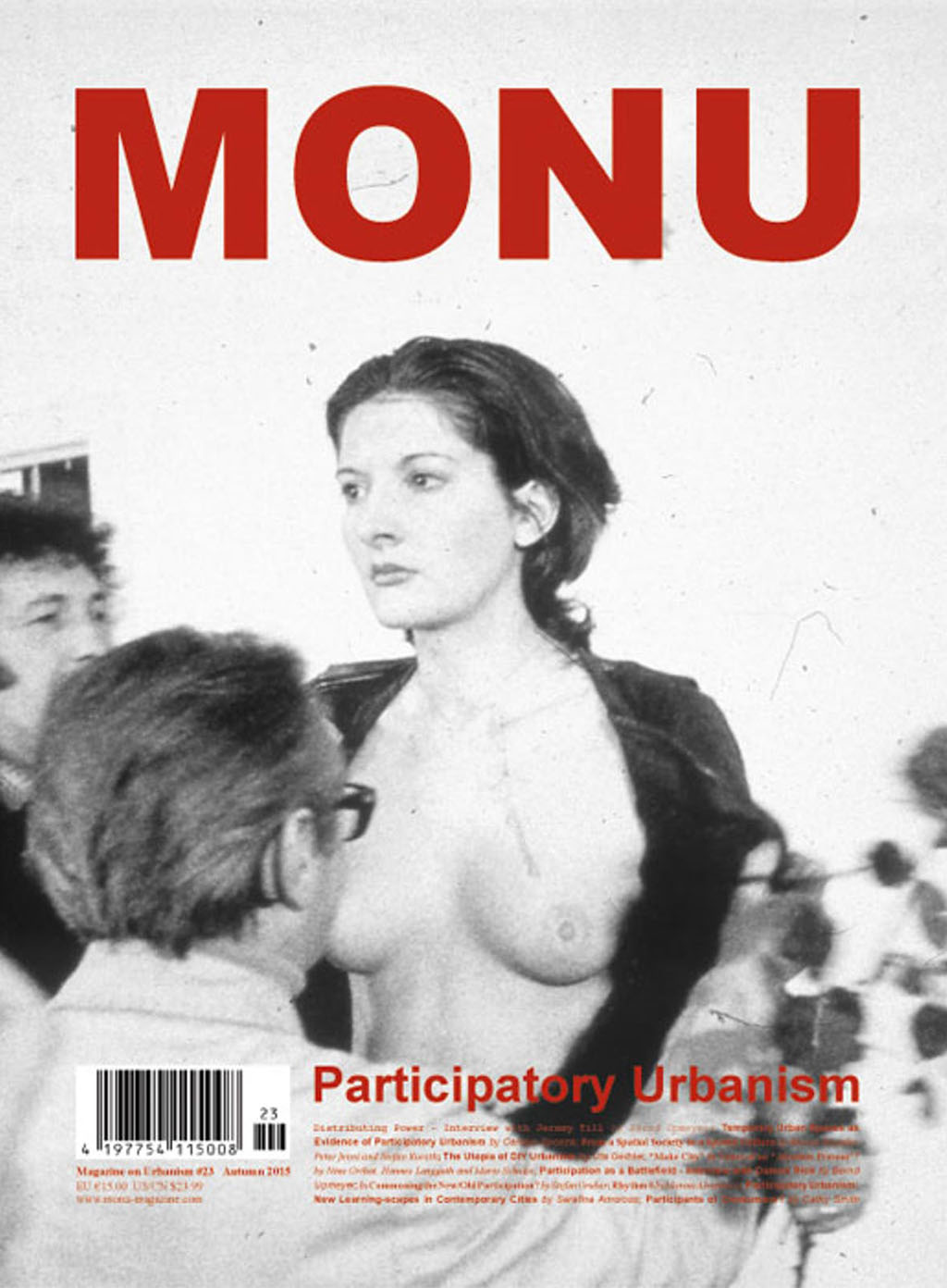
Cover of MONU #23 on “Participatory Urbanism”
AM: What has been the most interesting issue in your eyes so far?
BU: Since we try to improve the magazine with every single issue with regard to the diversity and quality of the contributions, the relevance of the articles in general and in relation to the particular topic of the issue, the relevance of each topic taken by itself, its appearance and layout, it can only be our most recent issue on “Narrative Urbanism”. But in the eyes of the readers it might have been #23 on “Participatory Urbanism”, as it was one of the issues that sold out very fast. I want to believe that it had to do with the topic itself that was important to investigate and not with that fact that the issue sported a half naked Marina Abramovic on its cover. I myself liked the topic of participation related to urbanism very much too, especially as MONU itself is a very participatory project that tries to be as open as possible to different people and viewpoints, recognizing that traditional journals struggle to connect to today’s informed audience.
AM: What weaknesses does the publication have?
BU: One of MONU’s weaknesses, which some might consider its strength, is its focus on niche topics, instead of topics that are aimed at a broad demographic such as politics, economics, or sports. We are of course interested in politics and economics too, but only when related to cities and architecture. That positions the magazine in a niche market, which puts it into a very fragile financial situation limiting our way to operate and the time we can invest into it. More supporters would certainly help. But we take this situation also as a chance to make use of our independence and thus to try as much as we can to remain critical, trying to enrich our society as a small press and to fill the niches that larger publishers neglect or have to neglect for the sake of sales. Thus, we will continue to take risks and flirt with failure in the future too.
AM: What is the role of publications today?
BU: Publications, whether printed or digital, independent or “dependent”, as a means to make content available to a broader public are as important today as they were in the past. If you refer with “publications” only to printed matter, then we should discuss the role of printed publications in the digital age. To this I would say that in the current “Trumpian” world with all its fake news, half-truths, and manipulated information that is mainly published digitally, printed publications play more than ever an important role in our society. Not that everything that is printed is true, but it is shown today – compared with digital information and everything that is on the internet – to be much more reliable. That has a lot to do with the costly, complicated, and time-consuming way in which printed publications are produced and distributed, its permanence, and the mostly and hopefully trained professionally staff behind them that controls, fact-checks, and usually improves the content.
AM: How involved is the affiliated academic institution?
BU: MONU is not affiliated to any academic institution. We are truly independent and wish to remain as such in the future too. Some academic institutions support, or have supported the magazine in the past, by announcing their academic programmes in the magazine, which we would like to encourage more. But none of these institutions is or was related to the content of the magazine in any way. We appreciate this freedom very much and try to communicate this to our contributors as well by allowing them a great deal of liberty. As the editor I usually try to keep my influence on the authors’ pieces to a minimum. I see my role more in kick-starting the topics than in telling the contributors how and what to write, a situation that I like as an author too.
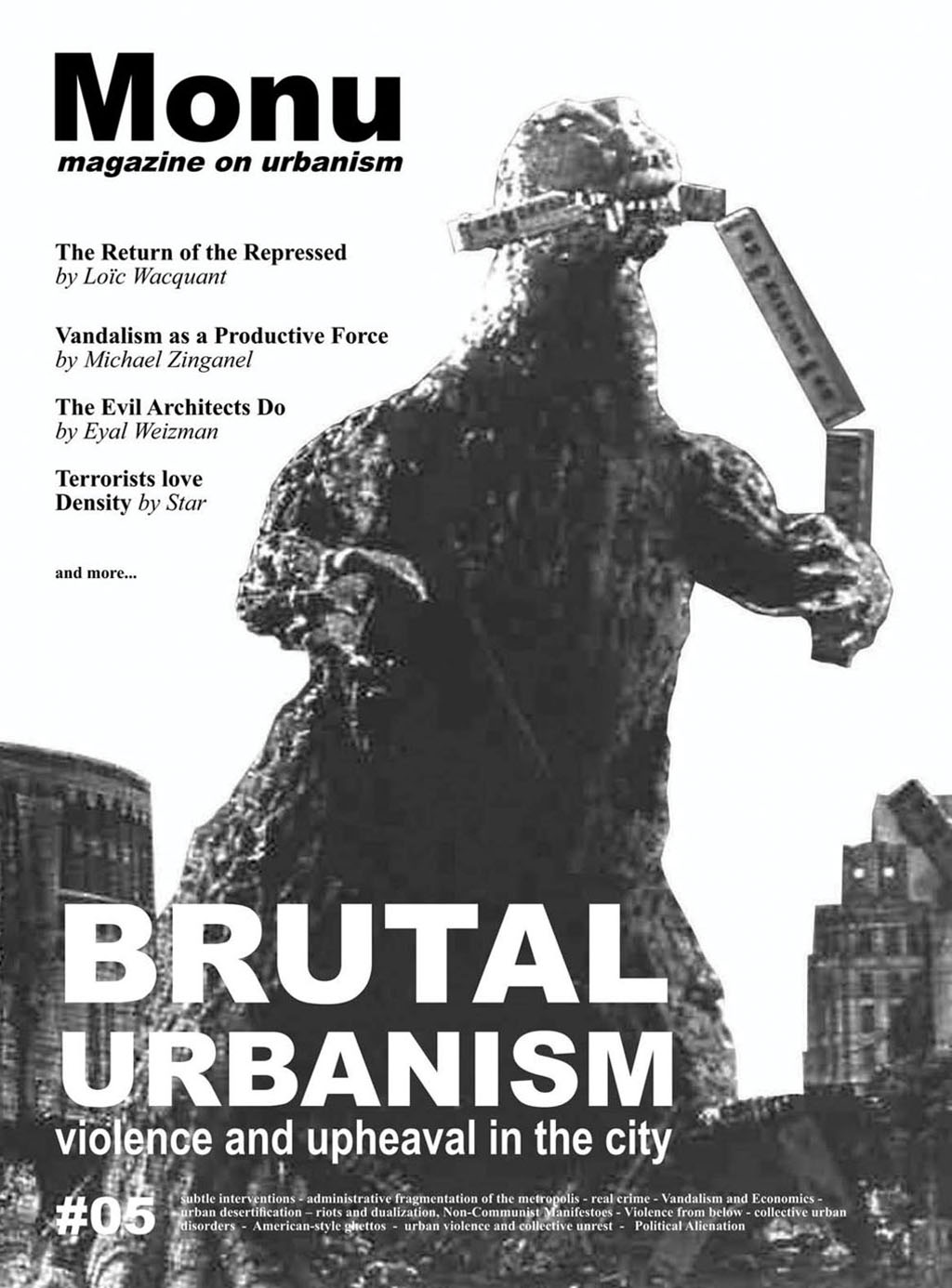
MONU #5
AM: What is the most recent issue focused on?
BU: Issue #29 on “Narrative Urbanism” was published only a couple of weeks ago, in October of this year. It focused on the power of “narratives” to improve the communication among everybody involved in the creation of cities, whether they are clients, developers, municipalities, architects, urban designers, or the users of cities, to name just a few. Our aim was to find out what such urban and architectural narratives might look like today, how they can be crafted, where they may be used, and how narratives can help improving our cities in general. One of the conclusions of the issue was, as Amila Širbegovic, one of the contributors, pointed out very well, that Narrative Urbanism has the potential on the one hand to render observable the stories of the unheard and the unseen, and on the other hand to create the possibility for architects, urban designers, and city planners to participate in – but also to question and to transform – the conditions of urban sites into which they intervene in their future practice.
AM: Tell us something someone would not know from turning the pages of the publication itself.
BU: MONU has been praised for its contribution to the visual culture of architectural publications and its layout, varying from article to article; the typography and provocative covers have been described as an important element of its unique attraction. We are certainly flattered by such recognition, but principally MONU’s content always comes first and its layout only serves the content and its readability. Thus, the magazine’s visual culture should not be overrated. The fact that every article is different in terms of layout was a clear choice from the beginning to emphasize the variety and diversity of the articles and viewpoints and to make it easier for the reader to know where one article starts and another ends. The covers were also never simply about provocation, but more about the belief that a magazine with uncompromising and daring content also needs uncompromising and daring covers.
Title: Urban Discussions Never Sleep
Author: Bernd Upmeyer
Date: December 2018
Type: Commissioned interview
Publication: Redlines: Collection of Interviews
Publisher: Archinect
Location: Los Angeles, US
Interviewer: Anthony Morey